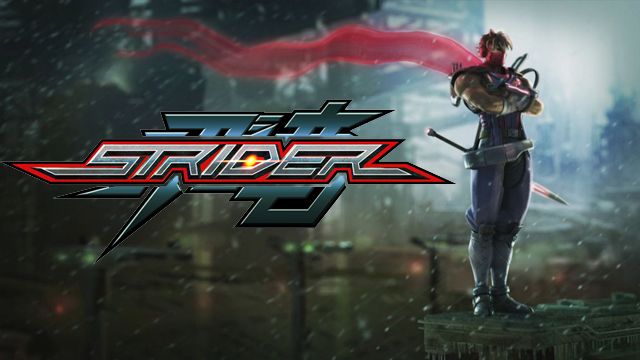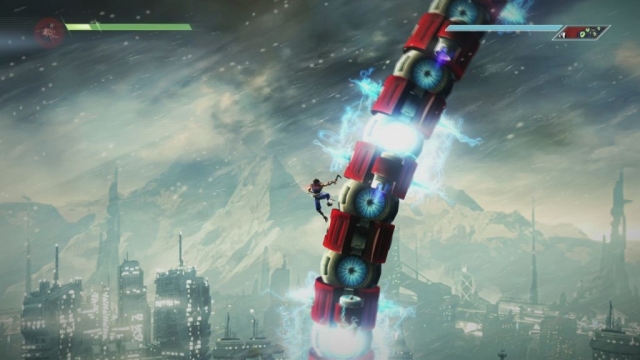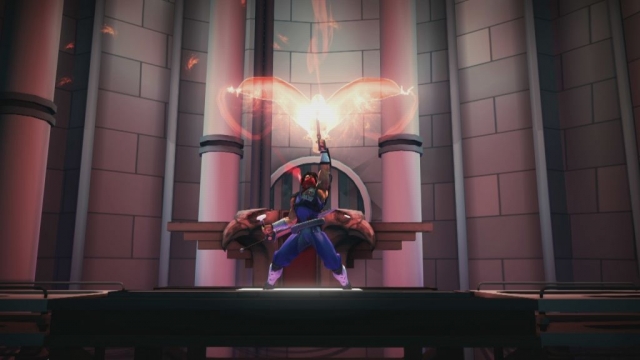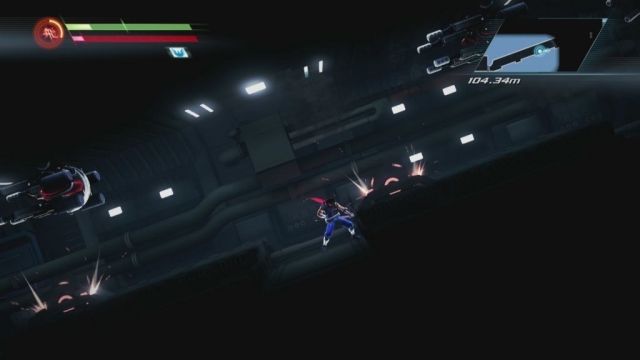Strider

It’s hard to believe that more time has passed between Strider 2’s release and this one than had passed between Strider 1 and that follow-up. However, after nearly a decade and a half, Strider Hiryu’s back with an action-platforming installment after years of cameos to show why he’s still the king of side-scolling action games. Double Helix’s hot streak continues, with them improving upon Killer Instinct’s reboot so much that it eclipses the original game by leaps and bounds. While I wouldn’t quite go so far as to say they’ve done that here, it is definitely a better game than Strider 2 was and delivers a satisfying Strider-style game with some new wrinkles.
The key to a great Strider game is the feel of it. Everything needs to be fast and responsive. Much like Strider 2, this keeps that going. Unlike 2, this adds new things to the formula – and as a nice bonus, they feel organic too. The biggest changes to the classic Strider formula are the inclusion of a wider variety of attacks than ever before and a Metroidvania-style level design. New attacks include triangle acting as a heavy attack that you can daisy chain into a downward strike to blast through grates beneath you, slice up enemies, or grab a string of power-ups. L1 and Square bring about a giant sonic bird attack that is great for either out-of-reach enemies or boss battles. Charging an attack with Square allows you to take out small foes with one shot, or just do tons of damage to larger ones – relative to it only taking a second or two to charge up.
Strider 2 was an amazing game, but hurt by being so claustrophobic and using levels that were super-small. This 2014 re-imagining of the series opens the world up to a level of exploration never before seen in a Strider game (although the NES game comes the closest). You can go through areas in at least a couple of different ways and exploration is encouraged. It may only net you some health or unlockables, but there’s always a reward for going off of the beaten path. Unfortunately, unlike Super Metroid or a 2D-styled Metroidvania, this doesn’t mean you can explore the entirety of the game world – you are limited to that current level. Luckily, they’re absolutely gigantic in comparison to prior games and will take some getting used to for series vets as a result. The reboot features a much faster pace than any past entry in the series. You’ve got enemies all over the place, and will need to bash buttons super-quickly in order to survive. After an hour, this will lead to some joint pain – so be sure to take a break while playing. You can do that a bit in-game if you want to just rest inside one of the few tunnels that have no enemies and just allow you to explore a bit.
Control-wise, it’s sharp as a tack on the PS4 – outside of one issue. The button layout is perfect and thanks to the redone controller, this is easily the most comfortable pad to play the game with. However, in a very odd move, you can’t control Strider with the d-pad – that can only be done with the left stick. The touchpad isn’t used for anything beyond bringing up a larger version of the mini-map that’s already visible in the top right-hand corner. While this is useful, it’s not something you’ll need to use often. Given how stunning many of the visuals are, it would be really nice if this game used it like Rayman Legends does where you can pause gameplay, pinch and zoom for artsy shots, and then share it. Sure, you can still share your images via the Share button, but they’re so low-res that it’s almost not worth doing.
Visually, Strider is a stunning game. It’s heavy on lighting effects that are impressive even if the presentation doesn’t seem to push the limits of the PS4. For those with newer hardware, it’s worth picking up over last-gen hardware since you’ll get a better overall experience in every way. Environments are lush, with beautiful reflections on floors at times and some dazzling cloud buildup early on against the legendary scalable dragon boss. The character models are very detailed, and Hiryu’s own design features just enough revamping while staying true to the Strider 2 design that it comes off as just about the perfect way to modernize it. The bright flowing red scarf has been taken away and replaced with just a facemask and a light beam version of the flowing scarf. It’s a small change, but a brilliant one when you actually notice it. Another one of those is the scanline effect place on the image that you have to really pay attention to see. Given the franchise’s origins in the arcade, it’s pretty fitting. The most impressive lighting effects are the kind you’ll see all the time – the multi-colored lights that fill the screen upon the destruction of your enemies. The screen winds up being bathed in color, and it brings about some of the most impressive sights you’ll see.
The original Strider featured some incredible music that remains memorable to this day. The same goes for its sound effects – anyone who played it can hear the slashing sound effect in their head instantly. This revamp features some remixed classic music as well as original compositions that fit in nicely with the classics. Like the original, it’s got a bit of voice acting that is…’80s B-movie level “so bad, it’s good”. While the overall audio isn’t quite as good as the original game, it’s still fairly good and much better than what you’d hear in most games.
Strider is a must-own if you’ve ever loved the franchise. Double Helix has struck gold once again and at only $15, you owe it to yourself to buy this as soon as possible. It plays slickly, looks really good, and changes just enough of the formula without altering it too much to make it seem like a fresh take that still retains a sense of familiarity. It’s not the most dazzling game on PS4, but is still full of beautiful visuals. Unfortunately, the game causing severe hand cramping due to its crazy-fast pace is a problem and does make the experience far less fun unless you remember to take breaks. The use of stick-only movement is also disappointing, and while the soundtrack is good, it fails to reach the lofty heights of past entries.
Given that Strider’s formula is an easy one to mess up (as the U.S. Gold Strider Returns showed), this was initially a worrisome release. However, just like with Killer Instinct, when Double Helix has something to work on that they’re passionate about, great things can happen. Killer Instinct brought them to the dance as a major player, and Strider is going to help keep them around until the final song is played. It pays homage to every facet of the franchise’s history with its gameplay, and the only way it could do more would be to include the past entries along with all of the older character designs as extras.
Reviewed By: Jeremy Peeples
Publisher: Capcom
Rating: 87%
——————————————————————————–
This review is based on a digital copy of Strider for the PlayStation 4 provided by Capcom.
 Game Over Online
Game Over Online










